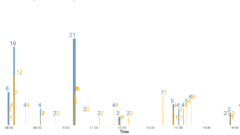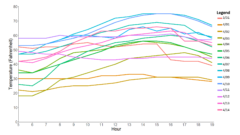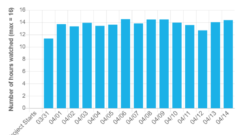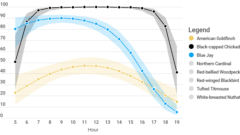
Cornell Feeders Live: From Observations to Visualizations
The Cornell Lab of Ornithology’s FeederWatch cam gives us a window into the lives of birds seen at backyard feeders in the Northeast United States. While many of the species are considered common and well-researched, we can still make discoveries in the context of their behavior at a bird feeder. Back in February, the Bird Cams...
May 26, 2021
What was the weather like during data collection for Cornell Feeders Live?
When we came together to figure out what to study with the Cornell FeederWatch cam, many people in the community were interested in the effects of weather. Several people shared their observations at their own bird feeders and their predictions for how weather would affect birds’ behavior at the feeder. “I would really like to see...
May 27, 2021
We were almost always watching!
For two weeks, the Bird Cams Lab and Bird Cams community came together to tag data in real time from the Cornell FeederWatch cam. At the end of data collection, the community amassed over 120,000 observations of the eight study species visiting the feeding station: American Goldfinch, Black-capped Chickadee, Blue Jay, Red-bellied Woodpecker, Red-winged Blackbird,...
June 1, 2021
Birds Don’t Check The Temperature Before Visiting The Feeder
For the Cornell Feeders Live investigation, we have shared visualizations that highlight (1) the sampling effort (i.e., amount of time watched) and (2) when the study species visited the feeding station. This second set of visualizations helped us start to answer our first research question: What is the daily visitation pattern of different species at...
June 22, 2021